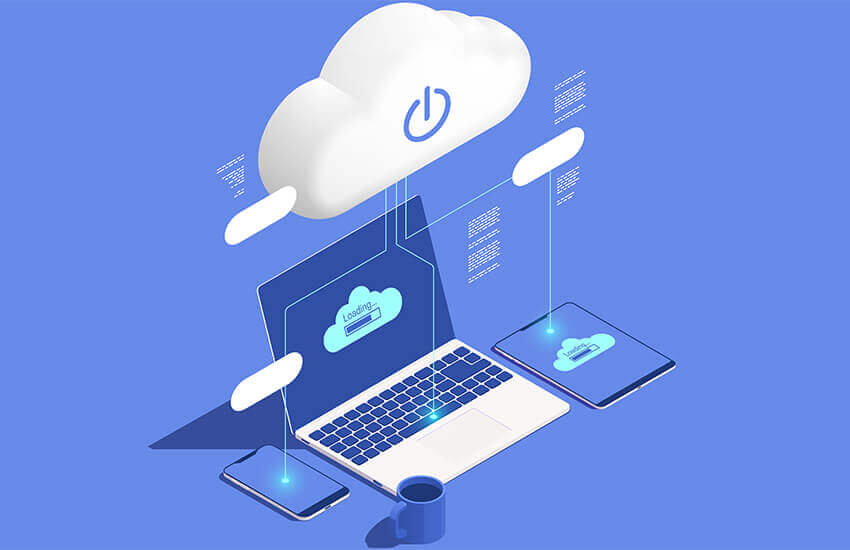Testing labs are vital for diagnosis and treatment. Laboratory Information Systems (LIS) are software platforms for managing day-to-day activities at medical testing labs. It provides a consolidated interface for scheduling tests, compiling reports, managing inventory, tracking tests, etc. Hospitals or clinics with in-house testing laboratories integrate their EMR or EHR solutions with the LIS software. Such a LIS EMR integration offers numerous benefits from clinical and administrative perspectives.
Benefits of Integrating LIS Software with EMR Systems
An EHR integration with laboratory information system software offers many advantages to providers and patients. Let’s look at some of them in detail –
1. Administrative Efficiency

Larger hospitals normally see several dozen or over a hundred patients regularly. Needless to point out, the testing laboratories would need to carry out more tests each day. So, things like scheduling tests, tracking them, gathering samples, preparing reports, and billing, among others, would need to be highly efficient.
An EMR integration with LIS systems makes it easy and fast for the pathologists and laboratory staff to carry out their activities. Integration with EHR systems allows them to fetch the necessary patient information and the prescribed tests by the doctors. They can also upload the results directly to the medical records for the doctors and patients. This speed and convenience are especially beneficial for admitted patients.
2. Paperless Operations

A LIS EMR integration digitizes the workflows surrounding test prescription, testing, report generation, and billing. As a result, there is no need for any of the staff to handle physical documentation. This applies to large hospitals and smaller clinics associated with independent testing labs. Test results can be stored directly in the EHR or EMR with a few clicks on a screen, without printing them. The absence of any paperwork automatically accelerates workflows and also goes a long way in reducing the carbon footprint.
3. Automation

A laboratory information system software removes the need for manual activities like data entry. With the growing adoption of automated healthcare solutions, implementing a LIS alongside an EMR reduces the number of manual tasks. This goes on to lower the number of errors and also accelerates workflows. As a result, a relatively smaller staff can carry out more work with greater efficiency.
4. Supports Research

Medical research requires data about diseases and symptoms. A LIS EMR integration provides patients’ test results in digital format in a compliant way. This allows researchers to access the necessary information without compromising the confidentiality of the information. Accessing the test results of many patients allows researchers to observe patterns and derive insights. Not only is this useful for researching diseases, but also helpful for public health experts to handle epidemics. The ability to chart patients’ test reports over some time improves the understanding of disease and helps improve the quality of treatments.
Integrating EMR Systems with LIS Software

A successful LIS EMR integration requires a specialized software solution called a lab interoperability module or LIB. This solution is a bridging software that facilitates seamless connectivity between an EMR and a laboratory software platform. It can also integrate practice management solutions with third-party EHR/EMR software.
The best part about such a LIS interface is that it prevents the need to establish point-to-point connections and enables multiple laboratory solutions to connect to an EMR. This makes a LIB especially beneficial for smaller clinics that won’t have a testing lab in-house. The best part about integrating the two medical software is the convenience for providers.
Each doctor can order tests and radiology scans with a few clicks on a screen for each patient. The order for the tests will be queued on the laboratory or radiology end of the system. After the test or scan, the results are returned to the provider or uploaded to the EMR for use. A lab interoperability module (LIB) streamlines integrating a LIS with an EHR. Certain custom-developed EMRs and laboratory software might need their own LIB to be developed specifically. But most off-the-shelf solutions can be integrated using standard lab interoperability modules.
What To Look For in a Laboratory Interoperability Solution?
Providers must consider certain factors when looking for new EMR integration solutions for laboratory information management system software. Let’s talk about some of them in detail –
1. Cost

As with any software, the cost of using a LIS EMR integration solution is a major deciding factor. It determines if the cost would be an initial upfront expense or a subscription is important. The organization’s budget depends on integrating its LIS with existing medical records solutions.
2. Compatibility

Depending on the circumstances, a healthcare organization might use medical software from one vendor and purchase another from a different vendor. The platforms differ in the programming languages used and the data formats supported. So, LIS interfaces that worked for one LIS-EMR pair might not be compatible with a new LIS or EMR. The clinic or hospital must spend on new platforms and a new interface solution in such cases.
This is a major consideration when investing in a LIS EMR integration solution. It should be compatible with most EHR/EMR systems and laboratory management solutions. Ascertaining, this will require research, but it would be risky to purchase an integration solution if you do so.
3. Cloud-Hosted or On-Premises

Healthcare cloud computing solutions have been widely adopted in the industry, and their market share continues to grow. In light of this, knowing if a LIS EMR integration solution is cloud-compatible is important. Moreover, it is also important to determine if it can integrate on-premises software with a cloud-hosted one.
Many healthcare industry observers note that cloud migration in the market is inevitable. Organizations using on-premises software would need to consider cloud-compatible integration solutions. Otherwise, they risk their platforms becoming obsolete in the face of expanding cloud adoption.
4. Implementation Time

Integrating medical records software with laboratory information management systems is bound to take time. Moreover, it will also involve training the staff to use the new integrated systems, which would take a few days at least. This might pose serious problems for larger hospitals concerning their day-to-day clinical and administrative activities. So, providers or medical administrators looking for new integration solutions must consider the time needed for implementation.
Conclusion
Healthcare integration is an integral aspect of the medical software industry. Innovations and advancements in existing technologies warrant a necessity in the evolution of integration solutions. The rise of automation and cloud-based solutions are also expected to bring about major changes in the industry. In light of this, EHR/EMR integration services must incorporate new interface software developments.
References
OSP is a trusted software development company that delivers bespoke solutions as per your business needs. Connect with us to hire the best talents in the industry to build enterprise-grade software.

How can we help?
Fill out the short form below or call us at (888) 846-5382
Looking for software solutions to build your product?
Let's discuss your software solutions for your product in our free development acceleration call!
Get In Touch arrow_forwardDiscuss Your Project Handover with a team of expert Book a free consultation arrow_forward
About Author

Written by Riken Shah linkedin
Riken's work motto is to help healthcare providers use technological advancements to make healthcare easily accessible to all stakeholders, from providers to patients. Under his leadership and guidance, OSP Labs has successfully developed over 600 customized software solutions for 200+ healthcare clients across continents.

















